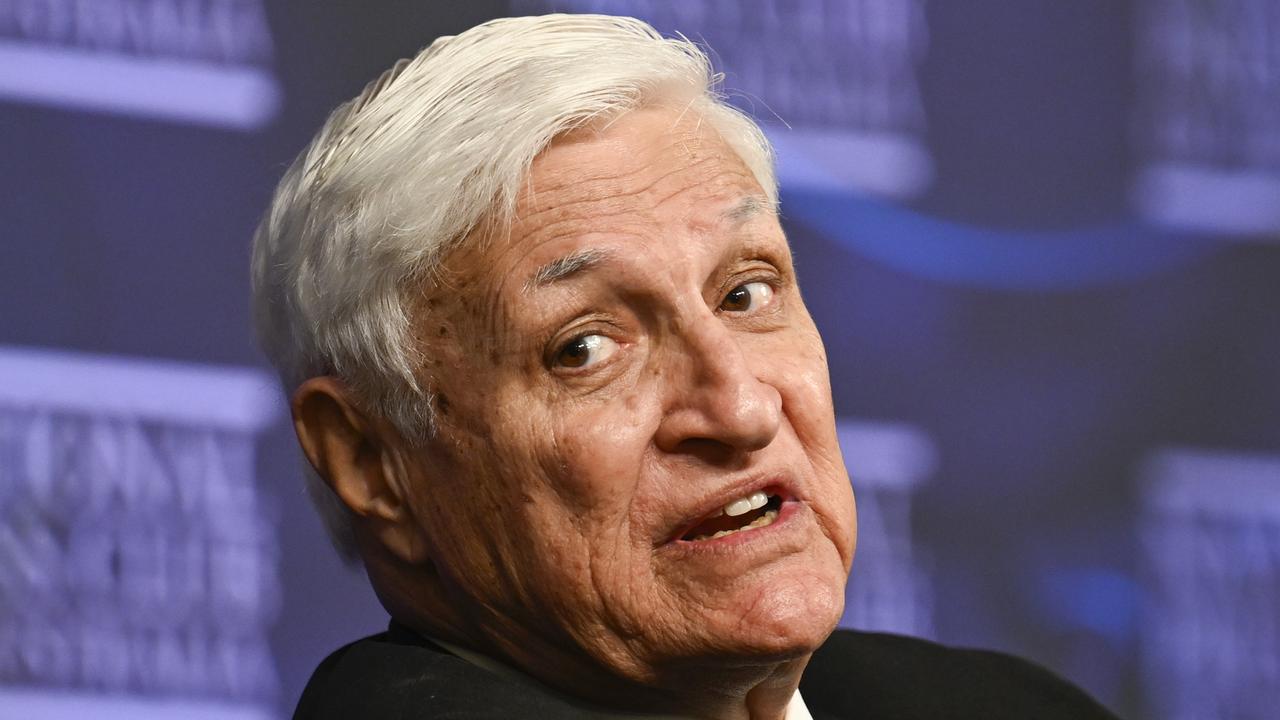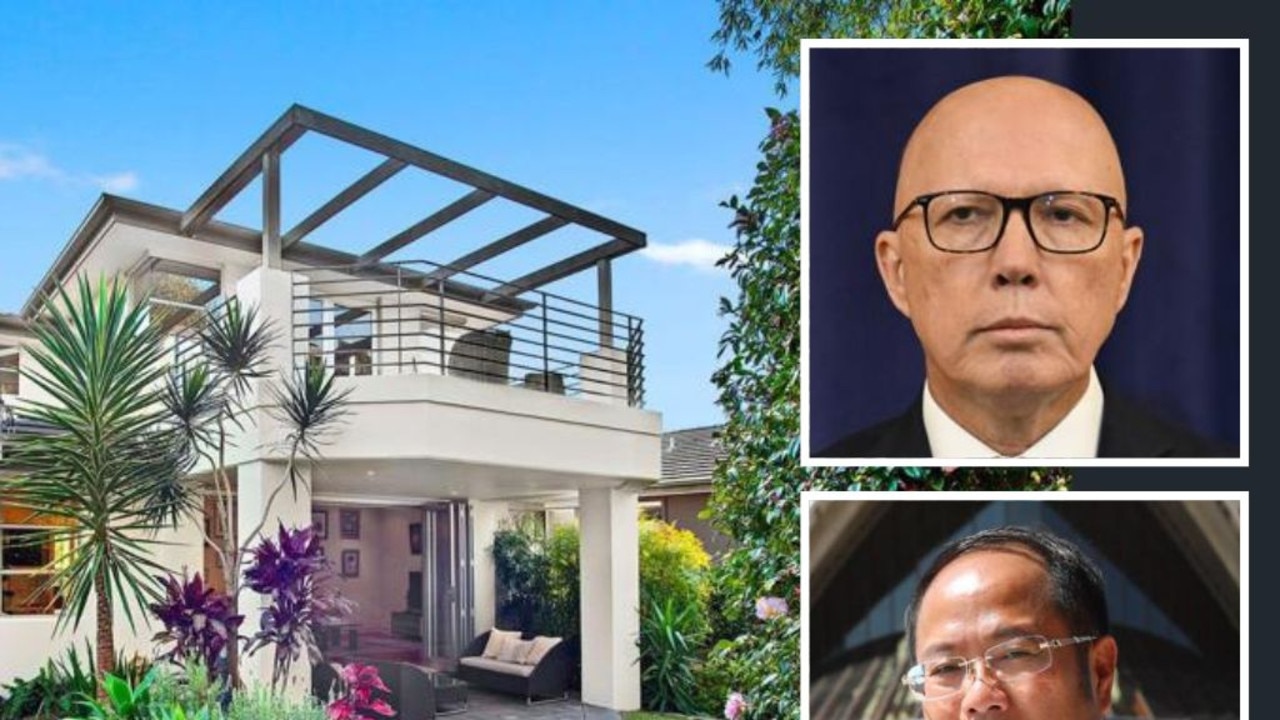Gunfire, propaganda and K-Pop: Inside the grim borders of Korea’s DMZ
THE road into Truce Village is lined with barbed wire fences and watchtowers, leading to a solitary building. What’s inside it could change the world.
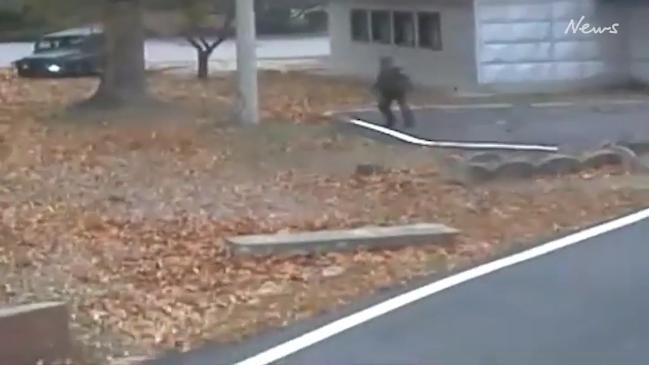
Leaders
Don't miss out on the headlines from Leaders. Followed categories will be added to My News.
IT’S one of the world’s most heavily fortified borders — an enduring and highly visible reminder of the conflict between two old enemies.
The Korean Demilitarised Zone (DMZ) draws a stark and sometimes deadly line between communist North Korea and South Korea.
But with the two old enemies set to meet at the end of the month to talk about calling a formal end to the Korean War — almost seven decades after hostilities were ceased — comes the prospect the DMZ could be dismantled.
It would mean the end of the 250km-long, 4km-wide stretch of land and water which for 65 years has been a sometime death zone for soldiers and defectors, bristling with armed guards and weapons when tensions mount.
Patrolled on either side by grim rival military forces, from South Korea it offers Westerners a glimpse — via the Dora Observatory — into secretive North Korea at close quarters.
In November last year, the DMZ was the grim stage for footage and images beamed worldwide of North Korean soldier Oh Chung-sung being felled in a hail of North Korean bullets as he raced to escape his country’s regimen.
He sped towards the border in a jeep before crashing and fleeing on foot as he was pursued.
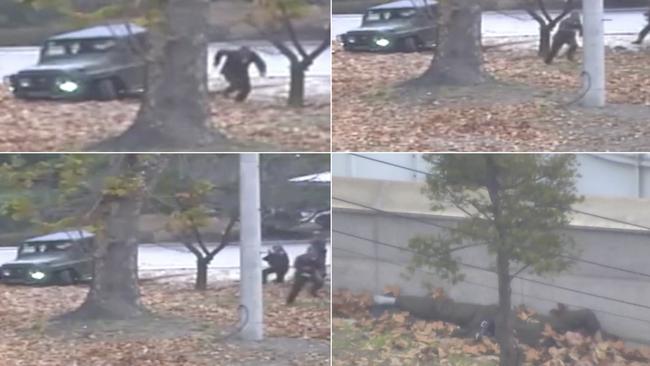
The 24-year-old was hit by bullets five times before being dragged to safety by South Korean border guards.
It’s believed North Korea has artillery weapons buried along either side of the DMZ which could smash the South Korean capital of Seoul if unleashed.
Equally, insiders say South Korea has its own artillery primed.
PROPAGANDA BROADCAST WAR
The DMZ’s soundtrack isn’t always gunfire.
From both sides large, mounted loudspeakers blast propaganda messages across the border to the other side.
After 11 years of silence, the South fired up the speakers in 2016 in response to North Korea testing a nuclear weapon.
The South Korean broadcasts blare out weather reports designed to get North Korean border soldiers’ attention, then add news from the outside world, as well as radio soaps and a sprinkling of K-pop music.
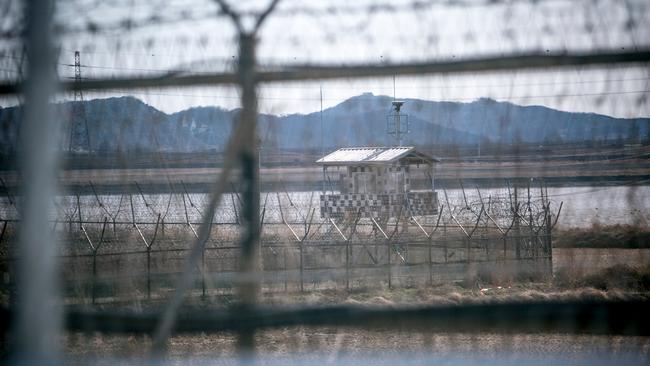
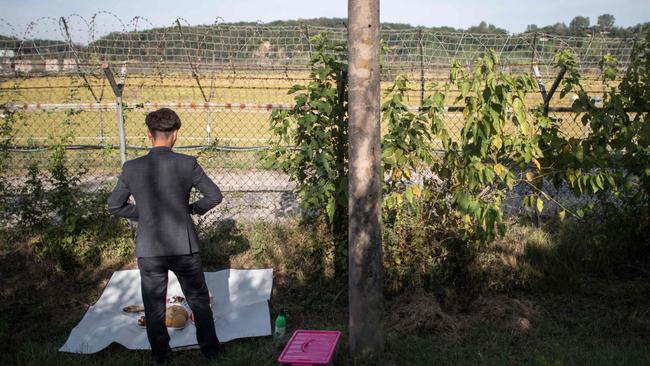
North Korean broadcasts sing the praises of their regime and Kim Jong-un, and play propaganda songs.
They’re not designed so much to entice South Koreans over as they are to ensure North Korea’s own soldiers don’t hear the messages from the south.
Several times a year, North Korean refugees can be seen visiting the south side of the zone, laying ceremonial offerings to relatives in North Korea alongside the heavily fortified, barbed wire border fence.
INSIDE THE DMZ
Bizarrely, while the DMZ’s boundaries bristle with weapons and troops, the land itself has been largely untouched by humans since it was established.
In parts, it has become a haven for some of Asia’s most endangered animals including musk deer, black bear and rare birds, Bloomberg said in a report in which a South Korean official said a declaration of peace could mean retuning the DMZ to its “original state”.
But the DMZ also houses the Joint Security Area of Panmunjom, or “Truce Village”.
The road into Truce Village is lined with barbed wire fences and security watchtowers stretching for kilometres.
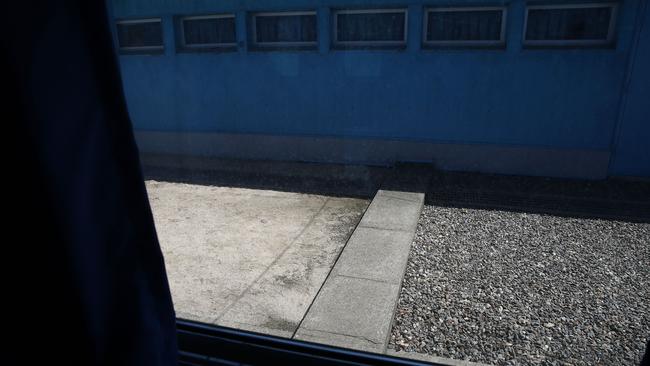
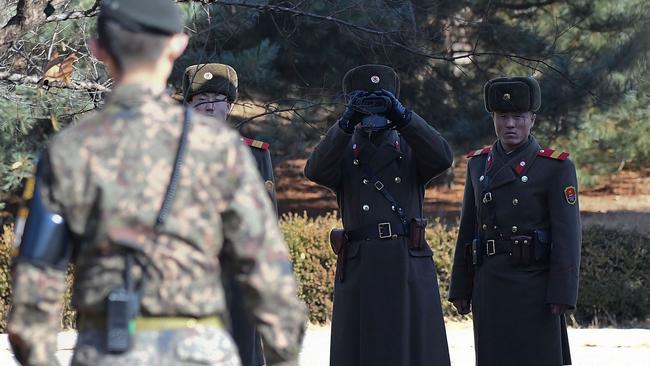
Panmunjom itself is a series of buildings set along either side of the military demarcation line. It even features a building built directly on that line, complete with a table with a line running straight down the middle to show the border between north and south.
It’s a place where North Korean and South Korean soldiers eye each other silently, almost eyeball to eyeball, either side of the line.
ARE THEY SERIOUS?
Almost 70 years after they went to war — and 65 years after they signed an armistice ceasing hostilities, North Korea and South Korea are on the brink of formally declaring peace.
North Korean leader Kim Jong-un agreed to meet his South Korean counterpart, President Moon Jae-in, at “Truce Village” on April 27 in what will be the Koreas’ third-ever summit, with a bid to formally end the 1950-53 Korean War a major factor in talks, Reuters reported.
“As one of the plans, we are looking at a possibility of shifting the Korean peninsula’s armistice to a peace regime,” a high-ranking South Korean presidential official told reporters.
“We want to include discussions to end hostile acts between the South and North.”
It would draw a line under a frozen conflict — 65 years after open hostilities ended.
South Korea and a US-led UN force are technically still at war with North Korea after the Korean War ended with a truce, not a peace treaty.
Such discussions between the two Koreas would have been unthinkable at the end of last year, after months of escalating tension and fear of war over the North’s nuclear and missile programs.
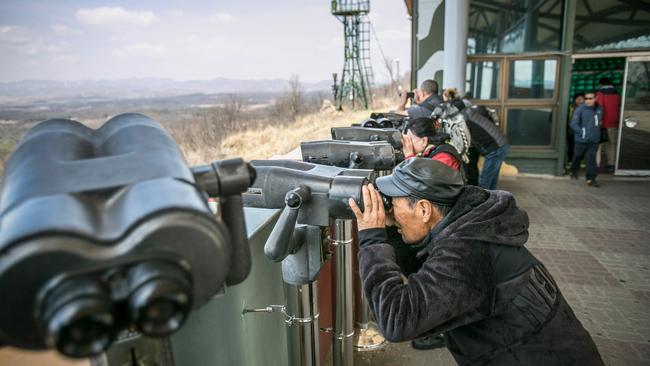
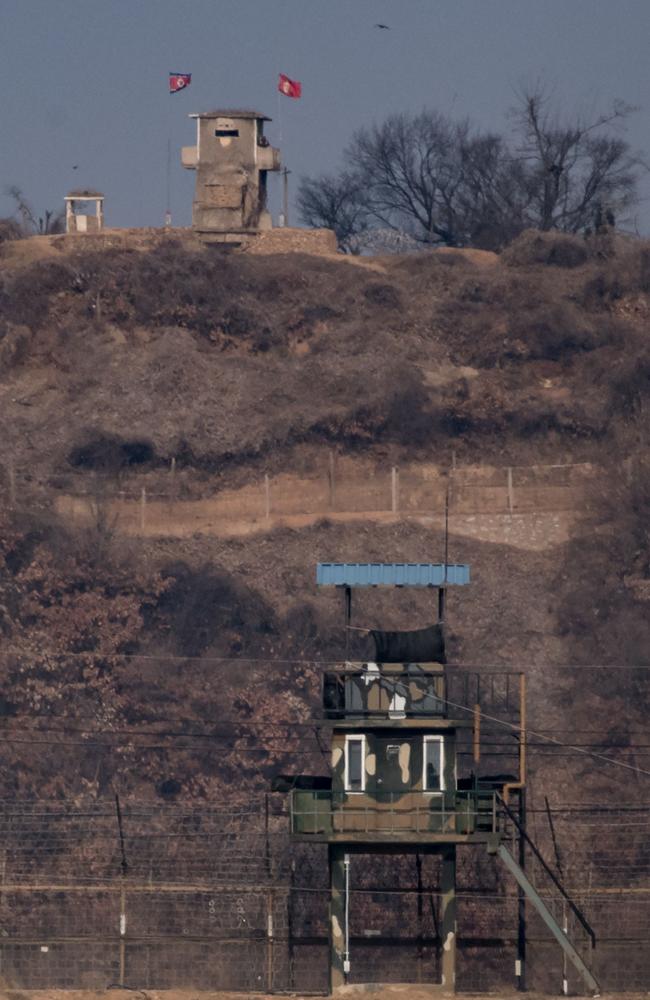
But then the North Korean leader declared in a New Year’s speech that his country was “a peace-loving and responsible nuclear power” and called for lower military tension and improved ties with the South.
A visit by a high-level North Korean delegation to the Winter Olympics in South Korea in February began a succession of steps to improve ties.
The Korean War raged from 1950 to 1953, and started when the North Korean Communist army crossed the 38th parallel and invaded non-communist South Korea after a series of border clashes.
Kim Il-sung’s North Korean army, backed by China and the Soviet Union, and armed with Soviet tanks, quickly overran South Korea.
The United Nations (UN) backed South Korea against the communist force.
The USA was the UN’s principal force, but Australia also had a presence, with 17,000 members of the Australian Army, navy and air force fighting as part of the United Nations multinational force.
After the war ended, Australians remained in Korea for another four years as military observers.
Originally published as Gunfire, propaganda and K-Pop: Inside the grim borders of Korea’s DMZ

